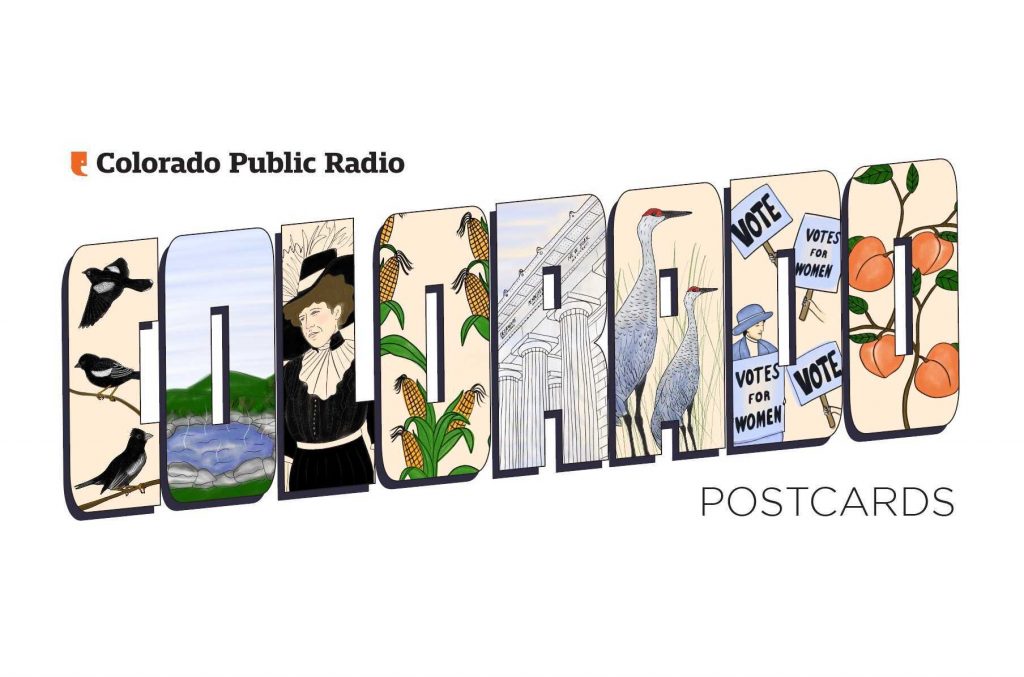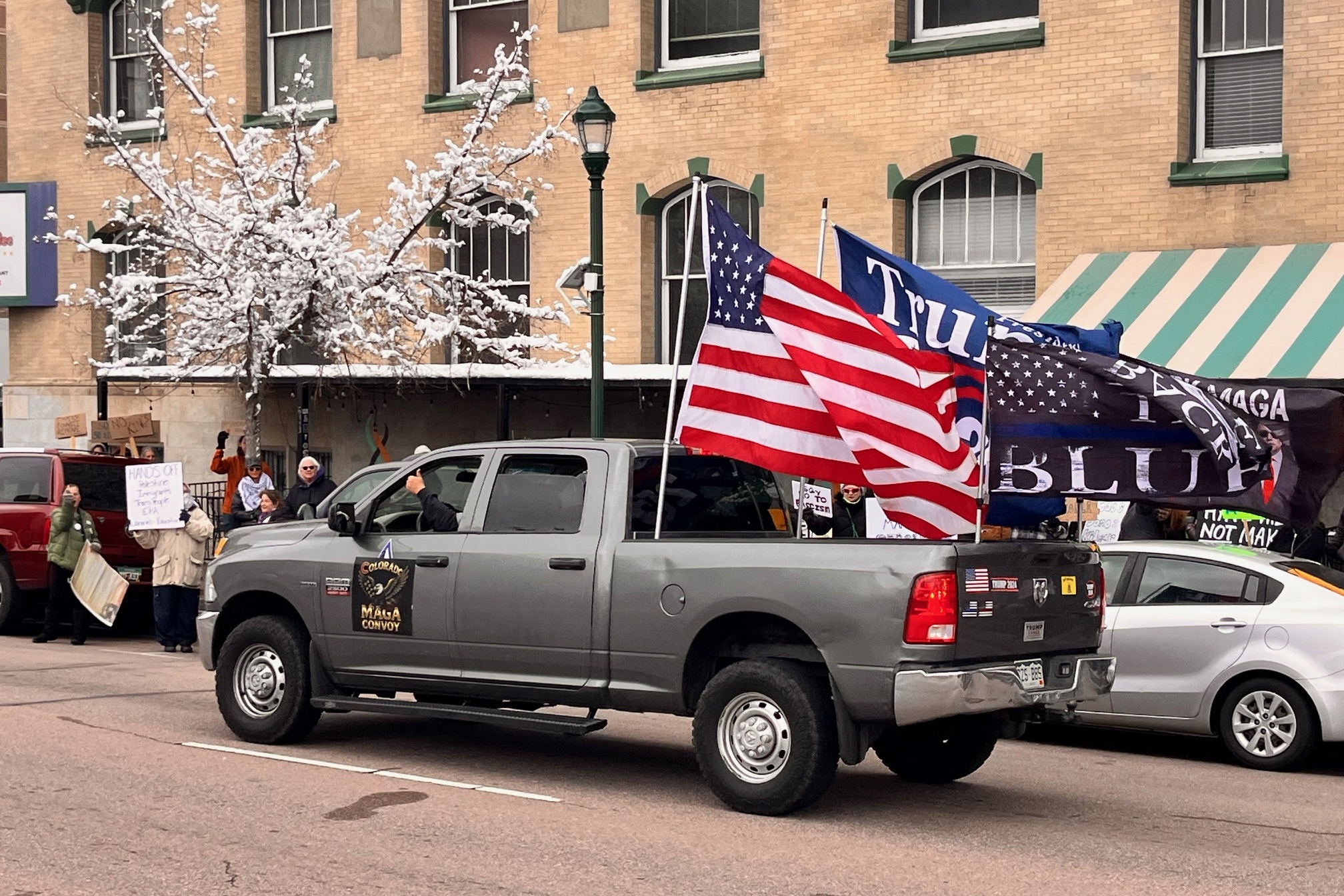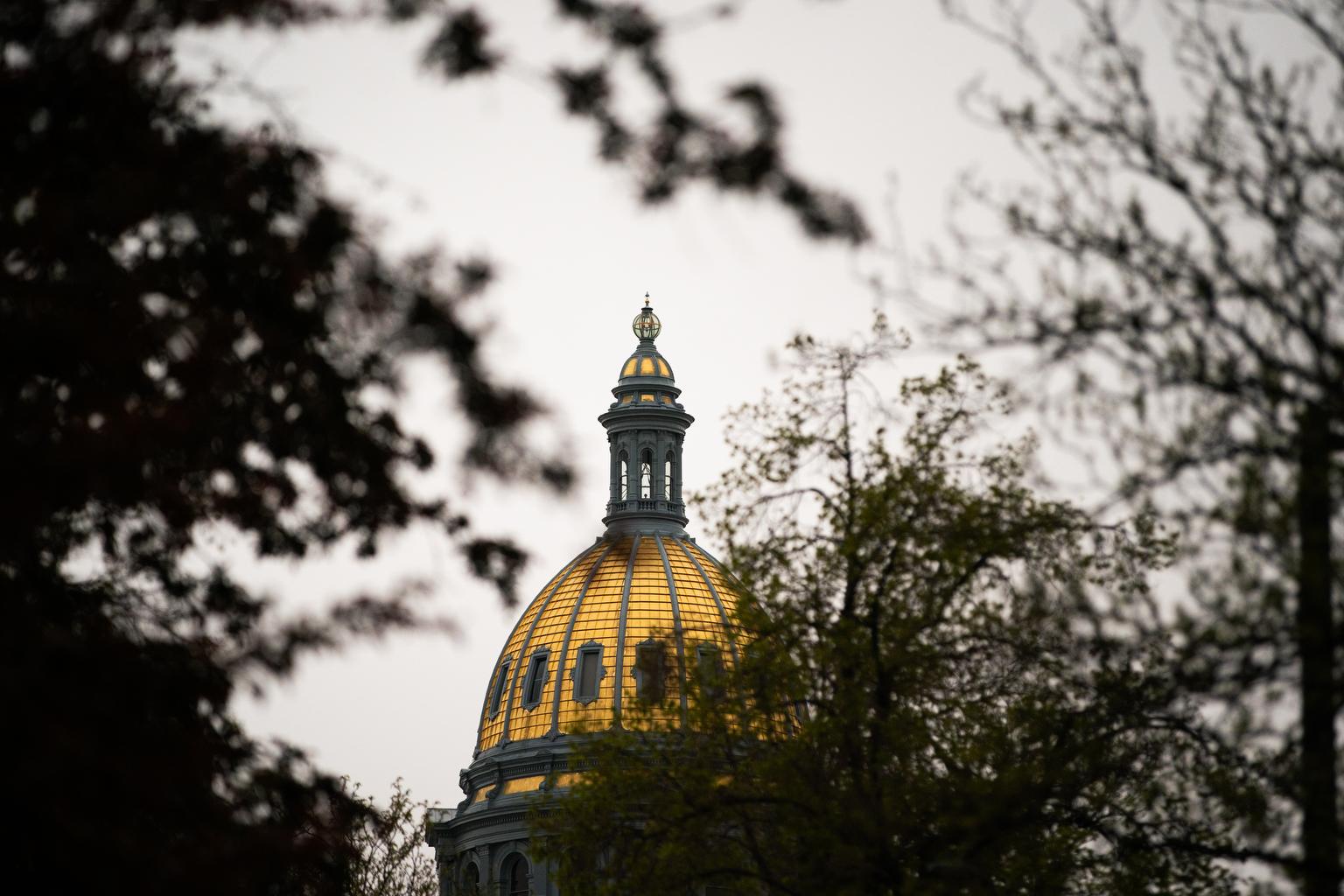
Mount Princeton was once an active volcano. When it erupted 36 million years ago, it sent a cloud of debris nearly a hundred miles northeast to what is now Castle Rock. A 20-foot layer of pumice and ash covered the area. Some of this volcanic material turned into large deposits of erosion-resistant rhyolite.
A few million years of flooding and scouring exposed the iconic castle-shaped butte that gives the city its name. Early people used this stone in arrowheads and spear points. But it’s preferred as a construction material. Rhyolite quarries actually put Castle Rock on the map. The pinkish-gray stone was shipped around Colorado and out of state for use in foundations, veneer, and decorative trim. Today, you can see rhyolite in a number of older buildings in Douglas County and in the sprawling Highlands Ranch Mansion — a modern-day castle, if you will, with hints of Castle Rock.
About Colorado Postcards

Colorado Postcards are snapshots of our colorful state in sound. They give brief insights into our people and places, our flora and fauna, and our past and present, from every corner of Colorado.









